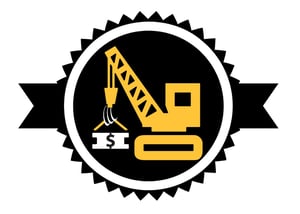 Job costs are the lifeblood of your construction business and accurately estimating them will determine if a project will make money.
Job costs are the lifeblood of your construction business and accurately estimating them will determine if a project will make money.
Managing job costs across the life of the project will ensure that your firm makes money on every job. Moreover, those job-by-job profits make the office and your executive salary possible.
Despite this, some CFOs don't take job costs seriously. Some see tracking those costs as more trouble than it is worth, while others think that the costs are so obvious that tracking them seems like extra, unnecessary work.
Neither is true and both can limit your firm's profitability. Here are seven tips that can make job cost tracking easier than you might think:
Set Priorities at the Top
Tracking job costs is a process that involves every level of your organization. All of your valued employees intuitively know the value of tracking costs by job. If you begin to place an emphasis on the accurate identification of every cost by job for every purchase, they will gladly join in and help identify jobs with enthusiasm.
Set up Solid Communication Between the Field and the Office
 Cost tracking starts in the field, where the materials are delivered and the purchase decisions are made. Field people are well-placed to know which costs go with the jobs. The trick is making it easy for them to flag the job name or number so that the person entering the invoice, credit card or debit card charge into the computerized accounting system can follow the process of assigning the proper cost code.
Cost tracking starts in the field, where the materials are delivered and the purchase decisions are made. Field people are well-placed to know which costs go with the jobs. The trick is making it easy for them to flag the job name or number so that the person entering the invoice, credit card or debit card charge into the computerized accounting system can follow the process of assigning the proper cost code.
Provide Information to Bookkeeping Staff Readily
Bookkeepers may be tempted to let it go when the job information isn't available, promising to assign the proper job number later. This is the single most common source of errors. Making job information readily available to the bookkeeping staff is the best way to counteract this tendency for misinformation to cloud your reports.
READ MORE: Construction Bookkeepers: Tips for Producing Quality Financial Statements
Require Purchase Orders
Purchase orders are a good way to ensure the success of your job cost system, so have your accounting, finance or tax professional help you develop a good system. Purchase order systems work when the office must issue a unique order and all supplies must get purchase order numbers from field staff before providing materials to any job. An effective system helps ensure that no invoice will come to your office without a job identified on it.
Use Caution Handing Out Company Credit Cards
With credit and debit cards, there is usually no way to include a job name or number on the receipt. Provide cards only to responsible crew leaders. They should be required to send receipts right away to the office that identify the jobs. This can be done either by texting receipts as images, e-mailing scanned copies of receipts to the bookkeeping department, or dropping paper receipts off with the job name or number marked on them.
READ MORE: Construction Companies: How to Obtain Strong Financial Statements
Clearly Separate Costs
Job costs differ from office and overhead costs by getting a job number that is distinct from the general ledger account number. The chart of accounts or general ledger can be a help or a hindrance depending on the skill of the accounting, finance or tax professional who develops your job cost system.
For example, general ledger expense codes typically start with the 5,000 series of account numbers. Job cost tracking then becomes easier for everyone if they are coded with 5,000 series numbers, while allocated costs are coded with 6,000 series numbers and office and overhead costs get 7,000 series account numbers.
If the chart of accounts and job cost ledger are set up professionally, cost allocations will become easier and more accurate and job cost reports will be more accurate and useful.
Follow Best Practices
The actual job number you assign should be carefully chosen following best practices. For example, a good job number is not just the next number in a haphazard sequence that starts with some arbitrary number and has three or four digits. A good job number always conveys information such as the year the project started, the specialty trade involved, and whether the expenditure was a material cost, equipment rental cost, labor cost, or subcontractor cost.
Contact us for more information on job cost accounting and other construction best practices. This will make your life easier down the road as well as more profitable.
© 2020





